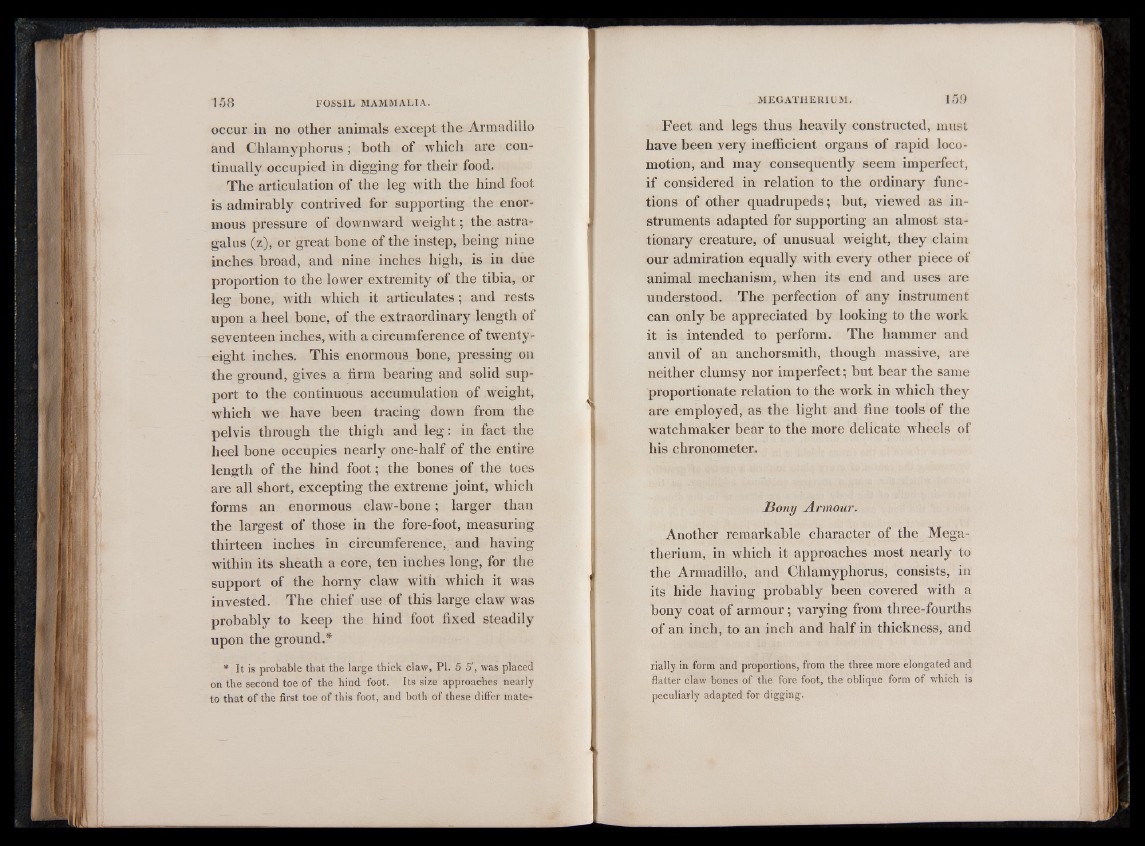
occur in no other animals except the Armadillo
and Chlamyphorus; both of which are continually
occupied in digging for their food.
The articulation of the leg with the hind foot
is admirably contrived for supporting the enormous
pressure of downward weight; the astragalus
(z), or great bone of the instep, being nine
inches broad, and nine inches high, is in due
proportion to the lower extremity of the tibia, or
leg bone, with which it articulates; and rests
upon a heel bone, of the extraordinary length of
seventeen inches, with a circumference of twenty-
mght inches. This enormous bone, pressing on
the ground, gives a firm bearing and solid support
to the continuous accumulation of weight,
which we have been tracing down from the
pelvis through the thigh and leg: in fact the
heel bone occupies nearly one-half of the entire
length of the hind foot; the bones of the toes
are all short, excepting the extreme joint, which
forms an enormous claw-bone; larger than
the largest of those in the fore-foot, measuring
thirteen inches in circumference, and having
within its sheath a core, ten inches long, for the
support of the horny claw with which it was
invested. The chief use of this large claw was
probably to keep the hind foot fixed steadily
upon the ground.*
* It is probable that the large thick claw, PI. 5 5', was placed
on the second toe of the hind foot. Its size approaches nearly
to that of the first toe of this foot, and both of these differ mate-
Feet and legs thus heavily constructed, must
have been very inefficient organs of rapid locomotion,
and may consequently seem imperfect,
if considered in relation to the ordinary functions
of other quadrupeds; but, viewed as instruments
adapted for supporting an almost stationary
creature, of unusual weight, they claim
our admiration equally with every other piece of
animal mechanism, when its end and uses are
understood. The perfection of any instrument
can only be appreciated by looking to the work
it is intended to perform. The hammer and
anvil of an anchorsmith, though massive, are
neither clumsy nor imperfect; but bear the same
proportionate relation to the work in which they
are employed, as the light and fine tools of the
watchmaker bear to the more delicate wheels of
his chronometer.
JBony Armour.
Another remarkable character of the Megatherium,
in which it approaches most nearly to
the Armadillo, and Chlamyphorus, consists, in
its hide having probably been covered with a
bony coat of armour; varying from three-fourths
of an inch, to an inch and half in thickness, and
rially in form and proportions, from the three more elongated and
flatter claw bones of the fore foot, the oblique form of which is
peculiarly adapted for digging.